This collection consists of short (2-5 minute) introductory videos on neuro-ophthalmological condition pathophysiology, diagnosis and treatment modalities by Dr. Andrew Lee.
Andrew G. Lee, MD, Professor of Ophthalmology, Weill Cornell Medicine; Chairman, Department of Ophthalmology, The Methodist Hospital, Houston, TX; Adjunct Professor of Ophthalmology, Baylor College of Medicine; Adjunct Professor of Ophthalmology, University of Iowa Hospitals and Clinics and the University of Buffalo; Clinical Professor of Ophthalmology, Department of Ophthalmology and Visual Sciences, University of Texas Medical Branch at Galveston; UT MD Anderson Cancer Center; and Texas A and M College of Medicine.
NOVEL: https://novel.utah.edu/
TO
Filters: Collection: ehsl_novel_lee
| Title | Description | Subject | ||
|---|---|---|---|---|
| 1 |
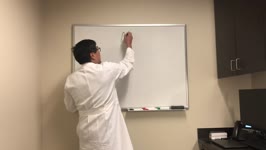 |
Arteriovenous Fistula | Summary: • Arteriovenous fistulas (AVFs) and arteriovenous malformations (AVMs) have similar pathophysiology and similar appearance radiographically but are slightly different o AVM: congenital problem involving a direct artery to vein connection with a nidus malformation; big tangle of blood vess... | Arteriovenous Fistula; Arteriovenous Malformations |
| 2 |
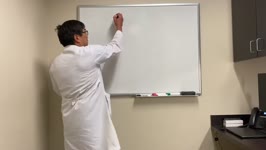 |
Autoregulation | Summary: • Autoregulation o Within threshold, blood flow is maintained across various blood pressures, even too low or two high pressures > Mediated via changing size of blood vessels o Outside threshold, blood flow is not able to be maintained and there is rapid decompensation causing ischemia �... | Autoregulation; Blood Flow |
| 3 |
 |
Bilateral 4th Nerve Palsy | Summary • Diagnosing bilateral 4th nerve palsy can be challenging • Steps to Diagnosing o First Step - Which eye is higher? -Left and right hypertropia -> both eyes high -> cancel out; might not have double vision when looking straight ahead o Second Step - Worse on right/left gaze? -Reversing ... | Trochlear; Cranial Nerve; Hypertropia |
| 4 |
 |
Blood Supply of the Optic Nerve | Dr. Lee lectures medical students on blood supply to the optic nerve. | Blood Supply; Optic Nerve; Ischemia |
| 5 |
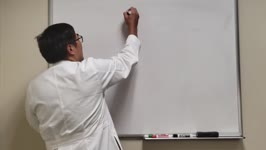 |
Cilioretinal Artery | Dr. Lee lectures medical students on the subject of cilioretinal artery. | Cilioretinal; Occlusion |
| 6 |
 |
Cranial Nerve Six Palsy | Dr. Lee lectures medical students on the sixth cranial nerve and syndromes associated with the sixth nerve. | Neuroanatomy; Nerve Palsy |
| 7 |
 |
Cranial Nerve Three Palsy | Dr. Lee lectures medical students on the third cranial nerve and third nerve palsy. | Neuroanatomy; Nerve Palsy |
| 8 |
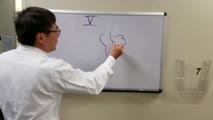 |
Cranial Nerve V | Dr. Lee lectures medical students on cranial nerve five. | Anatomy; Neuroanatomy |
| 9 |
 |
Cranial Nerve VII | Dr. Lee lectures medical students on cranial nerve seven. | Cranial Nerve 7; Anatomy |
| 10 |
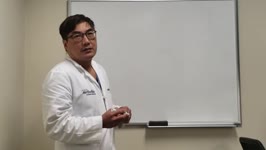 |
Dental Infections in Neuro-Ophthalmology | Dr. Lee lectures medical students on the impact of dental infections on neuro-ophthalmological health. | Dental; Maxilla; Mandibular; Molar |
| 11 |
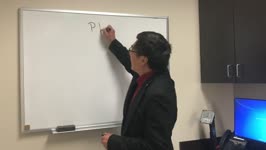 |
Diagnostic Approach to Ptosis | Dr. Lee lectures medical students on ptosis. | Ptosis; Eyelid Droop; Medical Condition |
| 12 |
 |
Fourth Cranial Nerve | Dr. Lee lectures on the fourth cranial nerve. | Neuroanatomy; Fourth Cranial Nerve |
| 13 |
 |
Horizontal and Vertical Gaze Centers | Dr. Lee lectures medical students on vertical and horizontal gaze centers. | Neuroanatomy |
| 14 |
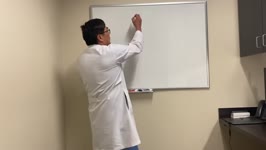 |
Incomplete Third Nerve Palsy Approach | Summary: • A complete third nerve palsy manifests as a complete or near complete ptosis and involvement of all the extraocular muscles (EOM) innervated by CN III o Reminder: this does NOT include the superior oblique muscle (innervated by CN IV) or the lateral rectus muscle (innervated by CN VI) �... | Third Nerve Palsy; Ptosis; Extraocular Muscles; Cranial Nerves |
| 15 |
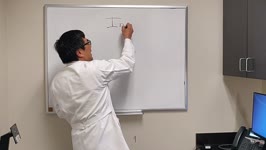 |
Infranuclear Cranial Motor Neuropathy | Dr. Lee lectures medical students on | Diplopia; Infranuclear; Neuropathy |
| 16 |
 |
Lateral Geniculate Field Defects | Dr. Lee lectures medical students on field defects. | Geniculate; Sector-anopia |
| 17 |
 |
Medulla in Neuro-Ophthalmology | Dr. Lee lectures medical students on the medulla. | Wallenberg Syndrome; Guillain Mollaret Triangle |
| 18 |
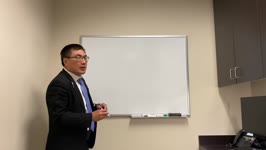 |
Myopia in Neuro Ophthalmology | Summary: • Progressive pathologic myopia is where the number keeps progressively getting bigger. o Note: Patients who have had a refractive procedure may not have an accurate myope in their chart. • Complications: o Afferent side: retinal thinning can lead to the usual myopic complications (ex. ... | Myopia; Myopic Complications |
| 19 |
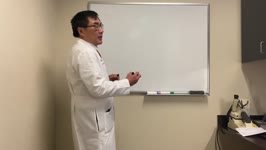 |
Paranasal Sinuses in Neuro-Ophthalmology | Summary: • Para-nasal sinuses include the frontal, ethmoidal, sphenoid, and maxillary sinuses. • Ethmoid and sphenoid sinuses can be very close to the optic nerve and the orbital apex. o Frontal sinus disease can push the eye down, causing hypoglobus, leading to ophthalmoplegia. o Chronic maxill... | Sinuses; Sinus Disease; Silent Sinus Syndrome |
| 20 |
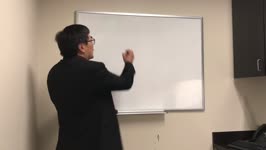 |
Perfusion Pressure of the Eye | Dr. Lee lectures medical students on perfusion pressure of the eye. | Neuro-Ophthalmology; Perfusion Pressure; Neuropathy |
| 21 |
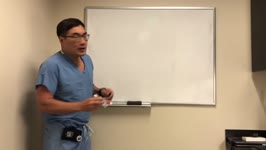 |
Pons | Dr. Lee lectures medical students on the subject of the pons. | Dorsal Pontine Syndromes; Ventral Pontine Syndromes; Cranial Nerve VI |
| 22 |
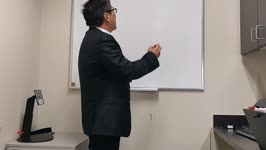 |
Pupil Reaction in NLP Eye! Real or Fake? | Summary: • Patient presented with a sluggish light reaction in the right pupil despite being no light perception in the right eye • The sluggish pupillary reaction to light could either be a true or false finding o If false, most commonly due to inadvertently testing the near reaction instead of... | Pupil; NLP; Dilation; Constriction |
| 23 |
 |
Pursuit Eye Movements: Control Centers | Dr. Lee lectures medical students about pursuit eye movements. | Anatomy; Neuroanatomy |
| 24 |
 |
Retinal Nerve Fiber Layer (RNFL) | Dr. Lee lectures medical students on retinal nerve fiber layer and the retinal nerve fiber. | Nerve Fiber; Neuro-Ophthalmology; Atrophy |
| 25 |
 |
Retrochiasmal Pathway | Dr. Lee lectures medical students on the retrochiasmal pathway. | Retrochiasmal; Lesions; Hemianopsia |
